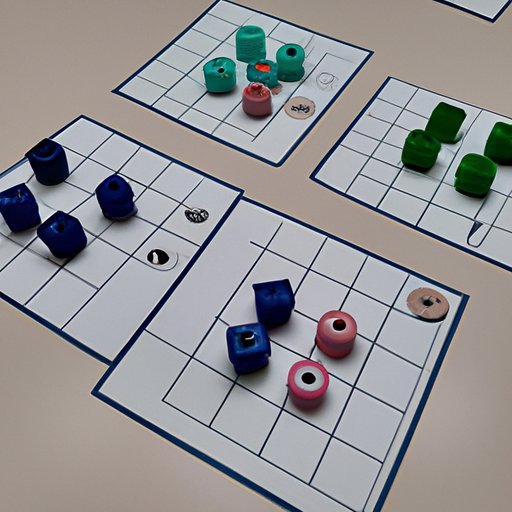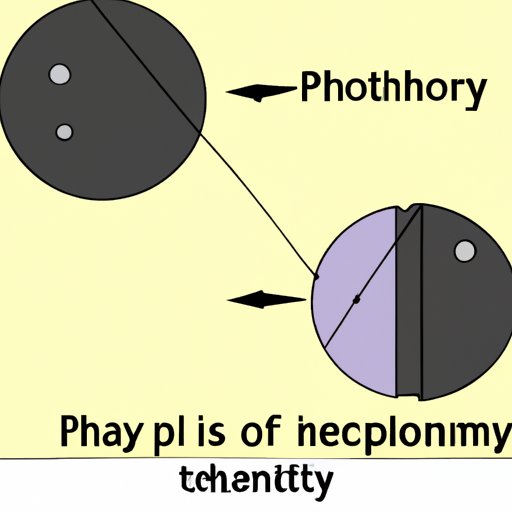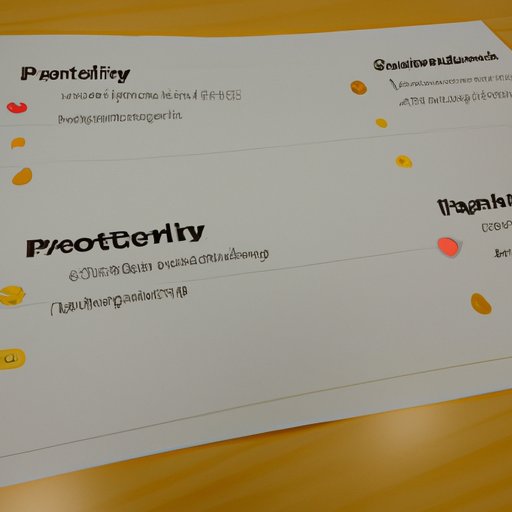Introduction
Probability is a concept that is often used in everyday life, but its role in the scientific process is often overlooked. In this article, we will explore the basics of probability in science, from understanding the fundamentals to applying them in real-world examples. We will look at how probability is used in biology, physics, astronomy, chemistry and earth science.

Exploring the Basics of Probability in Science
Probability is a measure of the likelihood of an event happening. It is expressed as a number between 0 and 1, with 0 indicating no chance of an event occurring and 1 indicating 100% certainty. Probability can also be expressed as a percentage or fraction. For example, a probability of 0.5 would mean there is a 50% chance of an event occurring.
Probability is a powerful tool in science because it allows us to make predictions about the behavior of natural phenomena. By understanding the probability of certain outcomes, scientists can develop theories and models to explain how the world works. Probability also helps us to understand how randomness affects the outcome of experiments and other scientific processes.
For example, consider the classic coin flip experiment. If you flip a fair coin, the probability of it coming up heads is 0.5, or 50%. This means that if you flip the coin 10 times, you would expect to get 5 heads and 5 tails. However, it is possible to get more or fewer heads than this, depending on the luck of the draw. This demonstrates the importance of probability in understanding randomness and making predictions.
Using Probability to Make Predictions in Science
Probability is used in many areas of science to make predictions about future outcomes. By understanding the probability of certain outcomes, scientists can develop theories and models to explain how the world works. For example, meteorologists use probability to forecast the weather by looking at past data and analyzing patterns. Similarly, economists use probability to predict the stock market by looking at trends and estimating the likelihood of certain events occurring.
The ability to use probability to make predictions has many benefits. It allows scientists to test their theories and models before they are put into practice. It also allows them to identify potential risks and take appropriate action to mitigate them. However, there are also some limitations to using probability to make predictions. The accuracy of the predictions depends on the quality of the data used, as well as the assumptions made about the future.
Probability and Statistics: The Foundation of Science
Probability and statistics are closely related concepts. Probability is used to describe the likelihood of certain outcomes, while statistics is used to analyze and interpret data. Statistics is an essential tool in science, as it provides the foundation for making accurate and reliable predictions.
Statistics involves collecting, organizing, and analyzing data to draw conclusions. It can be used to determine the probability of an event occurring, as well as to identify patterns and trends in data. For example, epidemiologists use statistics to study the spread of disease and make predictions about its impact on populations.
Statistics is also used to test hypotheses and evaluate results. By running statistical tests, scientists can determine whether their results are significant or simply due to chance. This allows them to draw meaningful conclusions about their data and make informed decisions.
Probability in Biology: Applying Principles to Real-World Examples
Probability plays an important role in biology. It is used to understand the behavior of living organisms and the interactions between them. For example, ecologists use probability to model the spread of disease through a population and predict its impact on the environment.
Geneticists also use probability to better understand the inheritance of genes. By studying the probability of certain traits being passed down from one generation to the next, they can gain insight into the evolution of species.
In addition, biologists use probability to study the behavior of populations. By understanding the probability of certain outcomes, they can predict the size and growth of a population over time. This helps them to understand the dynamics of an ecosystem and make informed management decisions.

How Probability is Used in Physics and Astronomy
Probability is also used in physics and astronomy to understand the behavior of matter and energy. Physicists use probability to study the behavior of particles and forces, as well as to make predictions about the universe. For example, quantum mechanics relies heavily on probability to explain the behavior of subatomic particles.
Astronomers also use probability to study the behavior of stars, planets, and other celestial bodies. By understanding the probability of certain outcomes, they can make predictions about the future of the universe. For example, they can use probability to estimate the likelihood of an asteroid hitting Earth or a supernova occurring in a distant galaxy.
Understanding the Role of Probability in Chemistry
Probability is also used in chemistry to help understand the behavior of molecules and atoms. Chemists use probability to study the structure and properties of chemicals, as well as to make predictions about how they will react under certain conditions. For example, they can use probability to determine the likelihood of a reaction occurring or the rate at which it will occur.
In addition, chemists use probability to study the behavior of solids, liquids, and gases. By understanding the probability of certain outcomes, they can make predictions about the behavior of these materials and develop theories to explain their behavior.

Analyzing Probability in Earth Science
Probability is also used in earth science to understand the behavior of geological processes. For example, geologists use probability to study the formation and movement of earthquakes, as well as to make predictions about their impact on the environment. They can also use probability to study the behavior of volcanoes and other geological phenomena.
In addition, probability is used to study the behavior of weather systems. Meteorologists use probability to make predictions about the likelihood of certain weather events occurring, as well as to estimate their impact on the environment. This helps them to better understand the behavior of the atmosphere and make informed decisions about how to respond to potential hazards.
Conclusion
In this article, we have explored the role of probability in science. We have looked at how probability is used in biology, physics, astronomy, chemistry, and earth science. We have seen how probability is used to make predictions, as well as to understand the behavior of natural phenomena. Finally, we have discussed how probability is used in conjunction with statistics to form the foundation of scientific research.
Probability is a powerful tool in science that allows us to make predictions and understand the behavior of natural phenomena. By understanding the fundamentals of probability and applying them in real-world examples, we can better understand the world around us and make informed decisions.
For further reading, check out the following resources:
- Khan Academy – Statistics and Probability
- National Center for Biotechnology Information – Introduction to Probability and Statistics for Biology
-
(Note: Is this article not meeting your expectations? Do you have knowledge or insights to share? Unlock new opportunities and expand your reach by joining our authors team. Click Registration to join us and share your expertise with our readers.)
